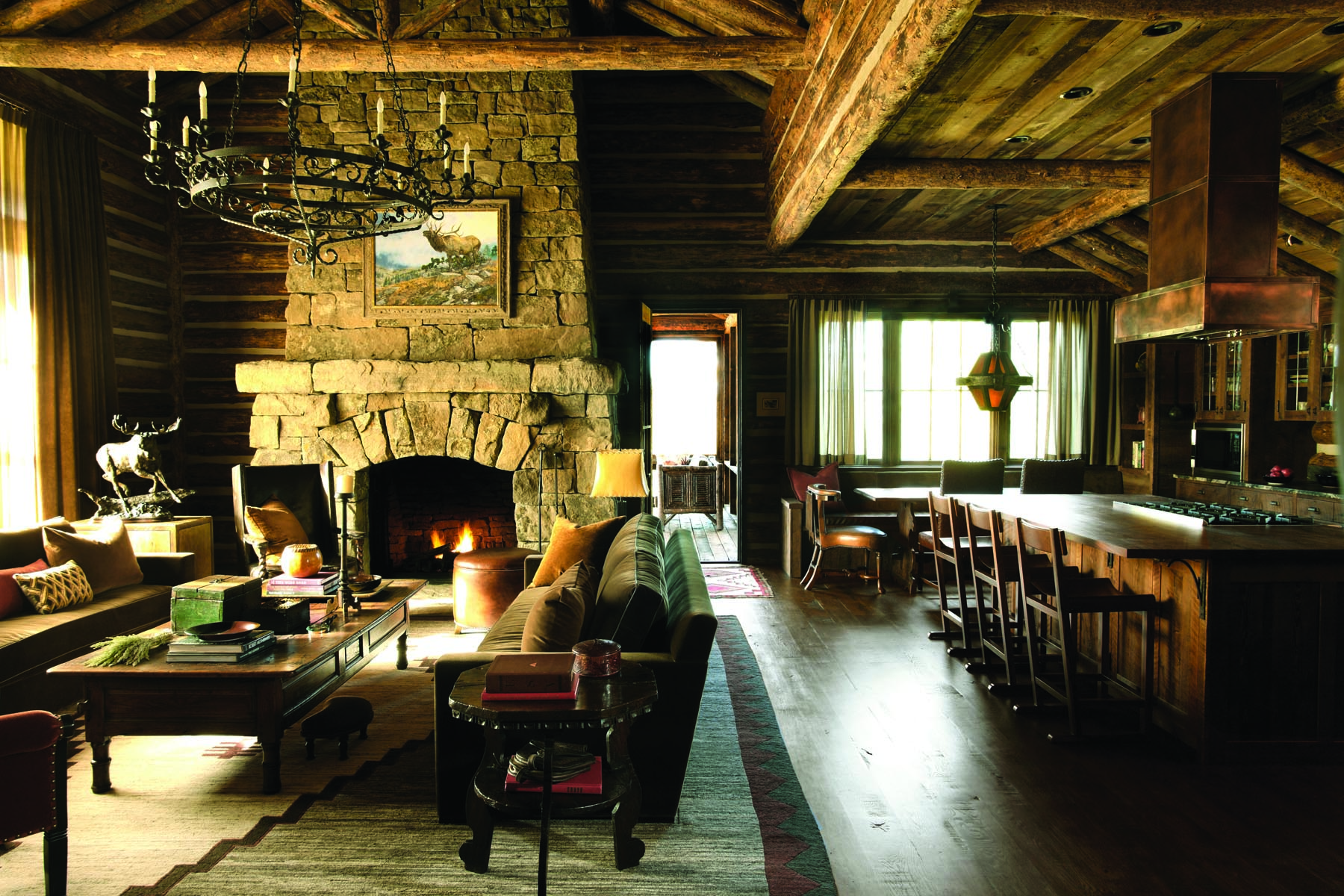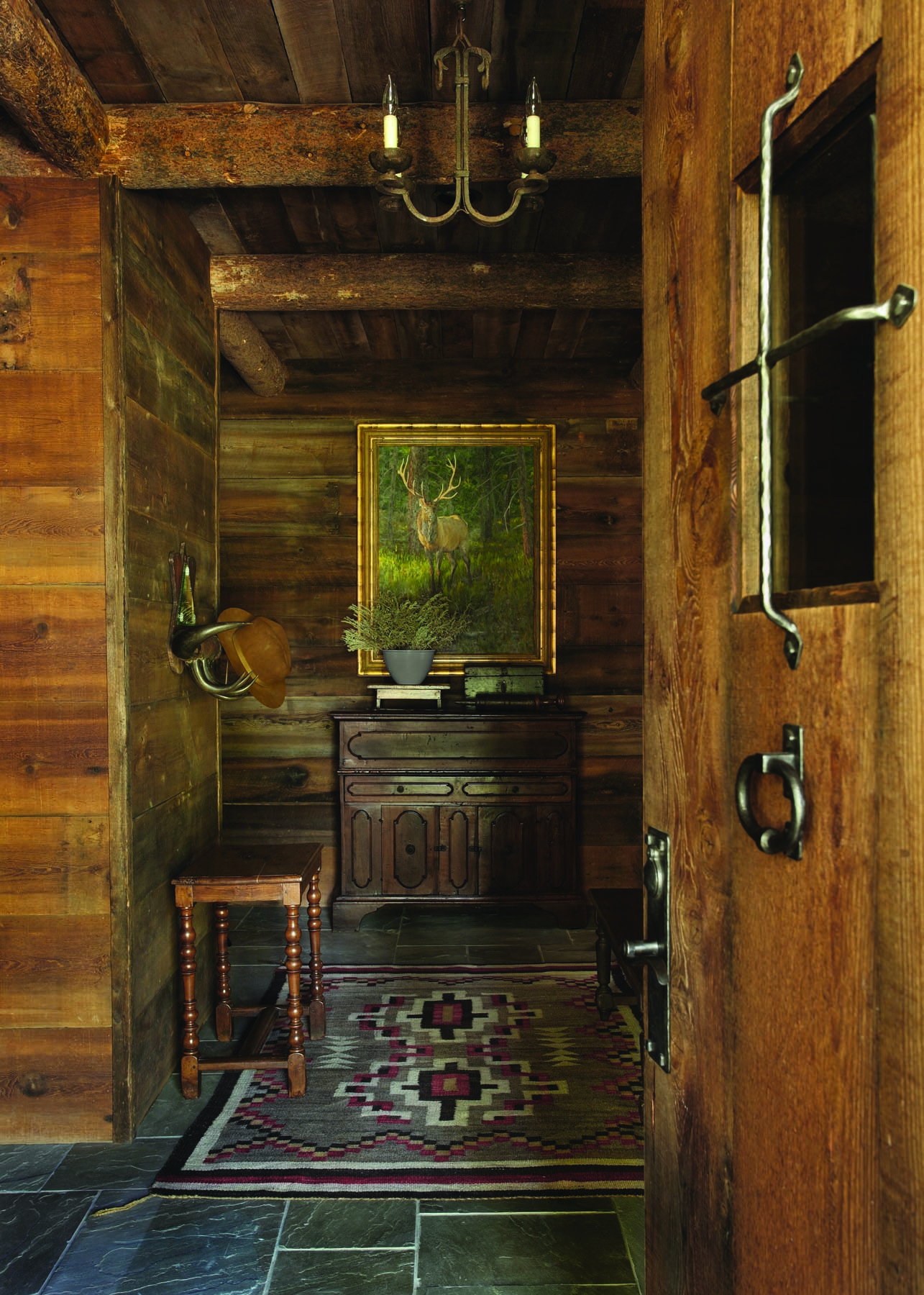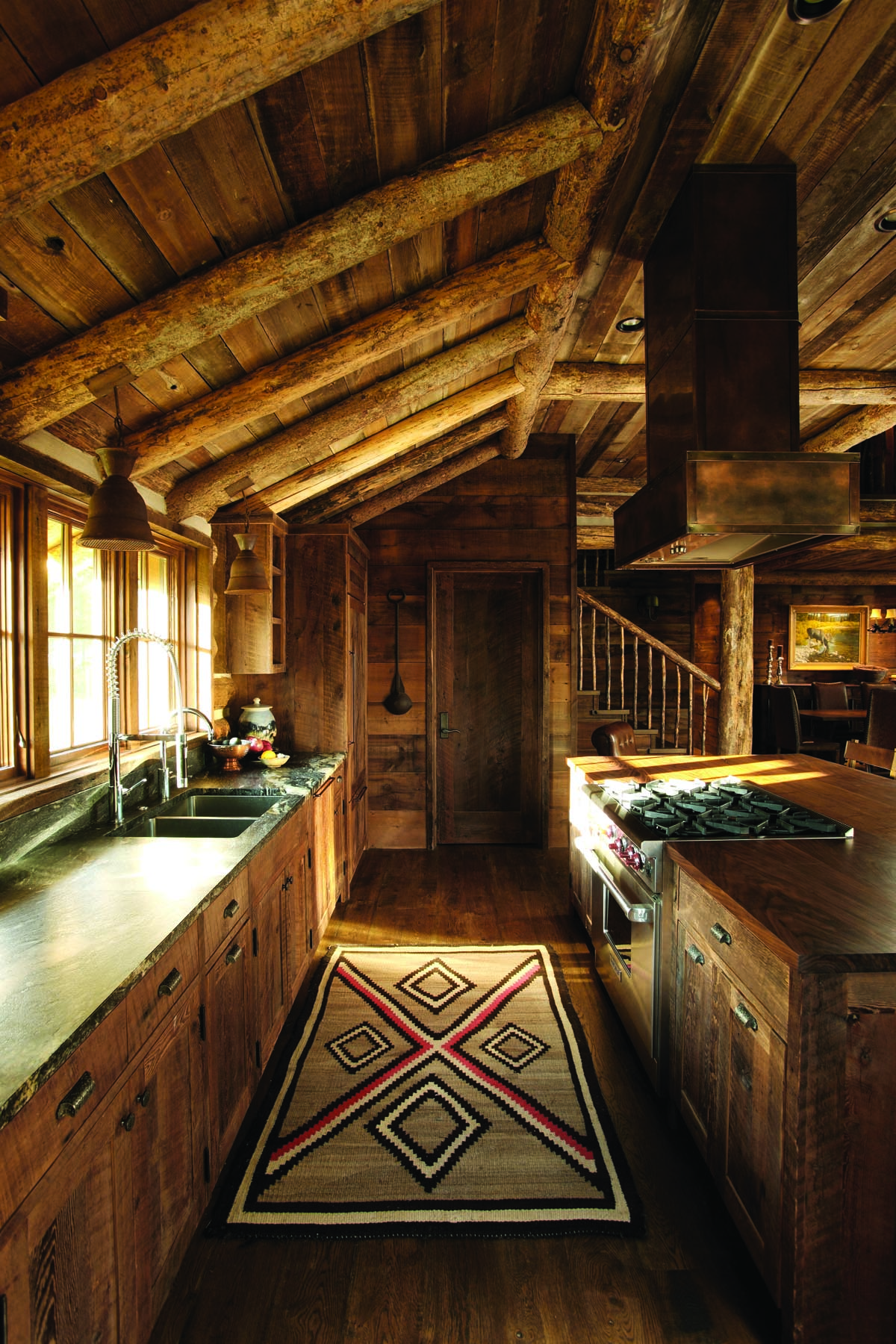
27 Aug An Uncommon Cabin in the Woods
OVER THE LAST 15 YEARS, one couple’s adventures to their rural property in the Moose Creek drainage near Big Sky, Montana, grew into a tradition. They started with daytrips, their children in tow. Picnics and hikes to see the fantastic unfurling of spring flowers in the meadow, the early morning crossing of elk on the creek or the nesting pair of sandhill cranes that return year after year. Later, with grandkids tagging along, they realized it was time to build a family cabin.
They approached Miller Architects in Livingston, where principal Candace Miller connected with the intention to build a retreat that would continue to draw this family together. The pair wanted a real cabin, rustic, with no phone, no TV, a place to unplug from the distractions of modern living.
“By design we wanted to step back in values and activities to a more basic time. We wanted to reveal to the grandkids that there are alternatives to technology and that there are more basic pleasures,” noted the husband, of the couple.
Located about five miles off the highway, the 680-acre section of land was an isolated parcel within a large logging operation until 1998. Tucked at the end of a dirt road that is only accessible by car from May through November, it is a private square of the national “checkerboard,” that was established by the U.S. Geological Survey over a century ago and is surrounded by Gallatin National Forest Service property in every direction. Encircled by the Gallatin Mountains, the landscape inspired a sense of stewardship for the couple. They made decisions to keep the house as small and low profile as possible for their needs. Miller Architects sited the home based on views and light orientation, but also with the idea of fire safety, and ultimately the best source of power for the residence were solar and geothermal alternatives.
Teaming up with North Fork Builders, of Bozeman, and Bozeman’s Energy 1 for renewable energy solutions to power the house, Miller designed the simplest of structures from round logs, reclaimed cedar and stone. Sometimes simple and subtle architecture can be the most challenging, but Miller is well versed in creating homes that respond to clients needs as fluidly as they do with the surrounding landscape.
The result is a peaceful retreat, with a roof that is scarcely visible over the tree line and a footprint that treads lightly on the earth. Its five bedrooms in 4,600 square feet were designed to sleep 16 people, including a bunkroom for eight grandchildren and a screened sleeping porch that gets used from spring to autumn. Keeping to the notion that this was a place to gather with family, Miller designed smaller than average bedrooms and gave the space to the public areas in the kitchen, dining and living areas instead.
“My dream is always to get all 16 of us together. It’s designed to have a place for everyone to sleep,” said the wife.
That came true when the house was finished in 2012, the family christened the space together by congregating in the fall to play board games, read and share meals.
Miller maintained a streamlined plan, keeping the design to a basic rectangle in order to maintain a spacious feeling. The natural color palette established by the building materials connects the inside and outside surroundings seamlessly; oversized and well-situated windows allow sunlight to filter into each room.
“I think Candace did a fine job of combining the logs with reclaimed lumber so that there is a variety of textures and materials,” said the husband. “It really has an old cabin feel to it.”
“It looks as if it could’ve been there for 100 years,” added the wife, wistfully.
For the interiors, the owners contracted William Peace, of Peace Design in Atlanta and Bozeman. Known for his ability to blend traditional and modern elements in unexpected ways, Peace brought an understated refinement to the rustic structure.
“Bill’s contribution to the house made the project come to life,” said Miller, who has worked with Peace on several residences in the region.
His hand shows in quiet touches, such as at the dining room table, where high-backed tooled leather chairs alternate with sleek-lined seating, to bring an eclectic combination of style that neutralizes formality, while honoring the primitive architecture. Also in the plush velvet couches that invite a gathering around the central stone fireplace. Or in the small bathrooms, where log and fir walls are contrasted with the sleek addition of Carrera marble vanity and bathtub.
Beneath the elegance and simplicity lies a high technology system that makes this retreat possible, though no visitor would ever guess the difference between this house and any other. Some 300 feet on a hill above the house, a large array of photovoltaic panels collects enough solar power to fuel all the lights and modern appliances in the house. A radiant heat geothermal system warms the rooms. Engineered by Energy 1, the cabin is completely “off-the-grid,” meaning it is self-sufficient and not connected to any traditional power sources. There is limited cell phone service and a small propane-powered back-up generator for emergencies.
The end result is an uncommon retreat that brings an extended family together through the simplicity of disconnecting.
“We have thoughts and hopes that each of our family members will use this with their own families throughout the years,” agreed the couple, “We hope that it stays in our family after we are gone.”
- Miller Architects integrated form and texture within the traditional cabin materials, incorporating indigenous round logs, Montana stone and reclaimed wood both outside and in.
- With classic artwork provided by Curtis Tierney, of Bozeman, the entry to the Moose Creek cabin is a statement of simple elegance.
- Daylight filters softly through the mullioned windows into the modern kitchen, where the geometric print of a Navajo rug adds a pop of color to the warm woodsy texture.
- Utilizing every square foot of this family retreat, Miller Architects carved out a reading nook at the top of the stairs and an additional lofty lounge that overlooks the main living area.
- The bunkroom and bedrooms echo log cabin roots while incorporating luxurious textiles for the bedding.
- Tucked into the trees and off the grid, the Moose Creek cabin is made of traditional round logs, stone and reclaimed wood, while being decidedly nontraditional by using solar and geothermal energy sources.










No Comments